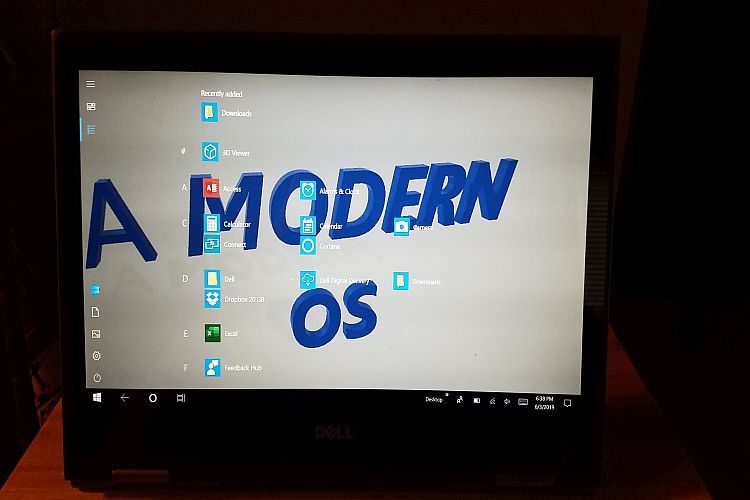The Future Of The PC OS Is What Microsoft Calls The Modern OS

Or at least that is according to Nick Parker, Microsoft Corporate Vice President of Consumer and Device Sales at Computex 2019 in Taipei this week. In his official Microsoft blog from May 28, 2019 entitled Enabling innovation and opportunity on the Intelligent Edge, Parker details this vision of the "modern OS" which he also did at Computex 2019. Given the level of detail expressed at Computex 2019 and in Parker's blog it seems that Microsoft is already positioning itself for what may lie beyond Windows 10. That's not to say Microsoft's modern OS will replace Windows 10, but it does appear to digress from the "Universal Windows Platform" (which appears to have failed) and instead focuses mainly on a few current platforms while preparing for new form factors and devices and using seamless updates. It's important to note that Nick Parker did not mention Windows or any actual name when describing Microsoft's modern OS but there are quite a few aspects and details he did present with this new concept.
Microsoft's New Modern OS Concept
One outstanding feature of Microsoft's modern OS is what's described as seamless updates which are done invisibly in the background. Nick Parker also states that "the update experience is deterministic, reliable, and instant with no interruptions!" One thing not mentioned is how reboots - which typically have been a requirement with many updates - will be handled and if they will even be necessary. Rebooting does equal an interruption so... we shall see. The modern OS is also envisioned by Parker as being secure by default where "the state is separated from the operating system; compute is separated from applications; this protects the user from malicious attacks throughout the device lifecycle." This is a very interesting statement which although very sensible does beg for a more detailed explanation. Another very promising aspect of the modern OS is that it could be "always connected" using WiFi and 5G LTE which according to Parker "will just work – and users never have to worry about a deadspot." Now we're talking. This is something which nearly any everyday mobile PC user would greatly appreciate.
The modern OS would also provide sustained performance where "from the moment a user picks up their device – everything is ready to go – without having to worry about the next time the PC needs to be charged." This is something which sounds fantastic but clearly needs further clarification to be real. The modern OS will enable cloud connected computing power and utilize AI (Artificial Intelligence) to basically understand what the PC user wants to do next and help them get that done. That part does have a bit of a privacy concern attached and should be something adjustable and/or controllable. Beyond all of these things the modern OS will also (understandably) be multi sense where the user can use a mouse, keyboard, touch, pen and even gaze to control a multi-faceted UI (User Interface). As mentioned a few current platforms and form factors would be candidates for the modern OS but it also will be including form factor agility to adapt to future devices. So how close is Windows 10 to being a modern OS and will it evolve or be replaced? Let's hope the answer does not shift too far to the left as Windows 8 (.1) did if and when the modern OS makes it's debut. Check out Nick Parker's bog post using the link below for more information.
Nick Parker's Official Microsoft Blog May 28, 2019
